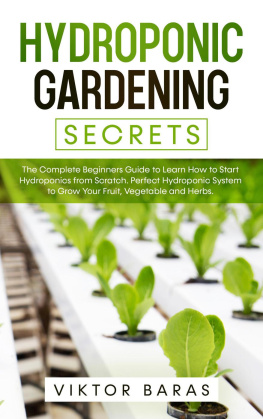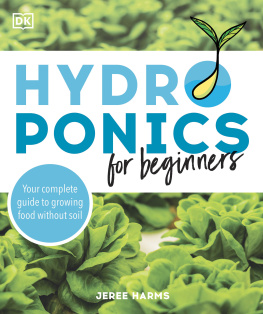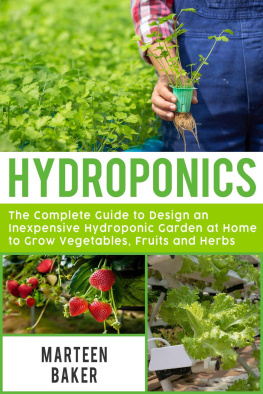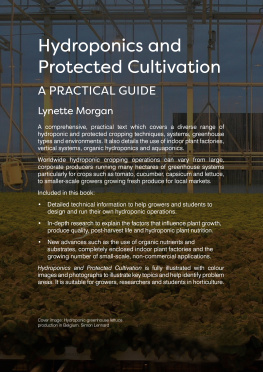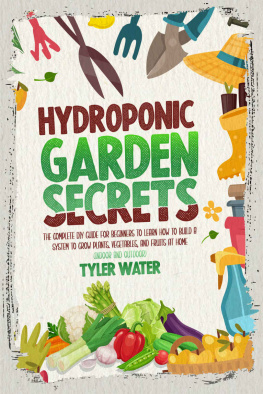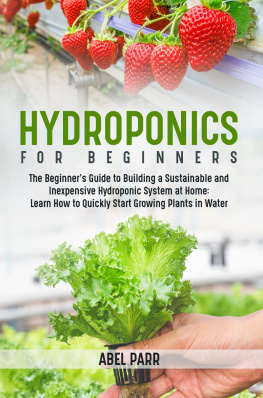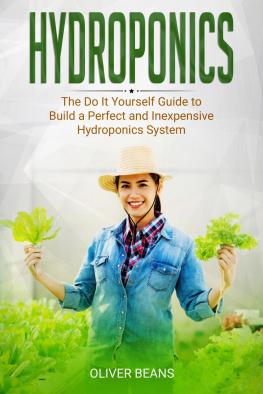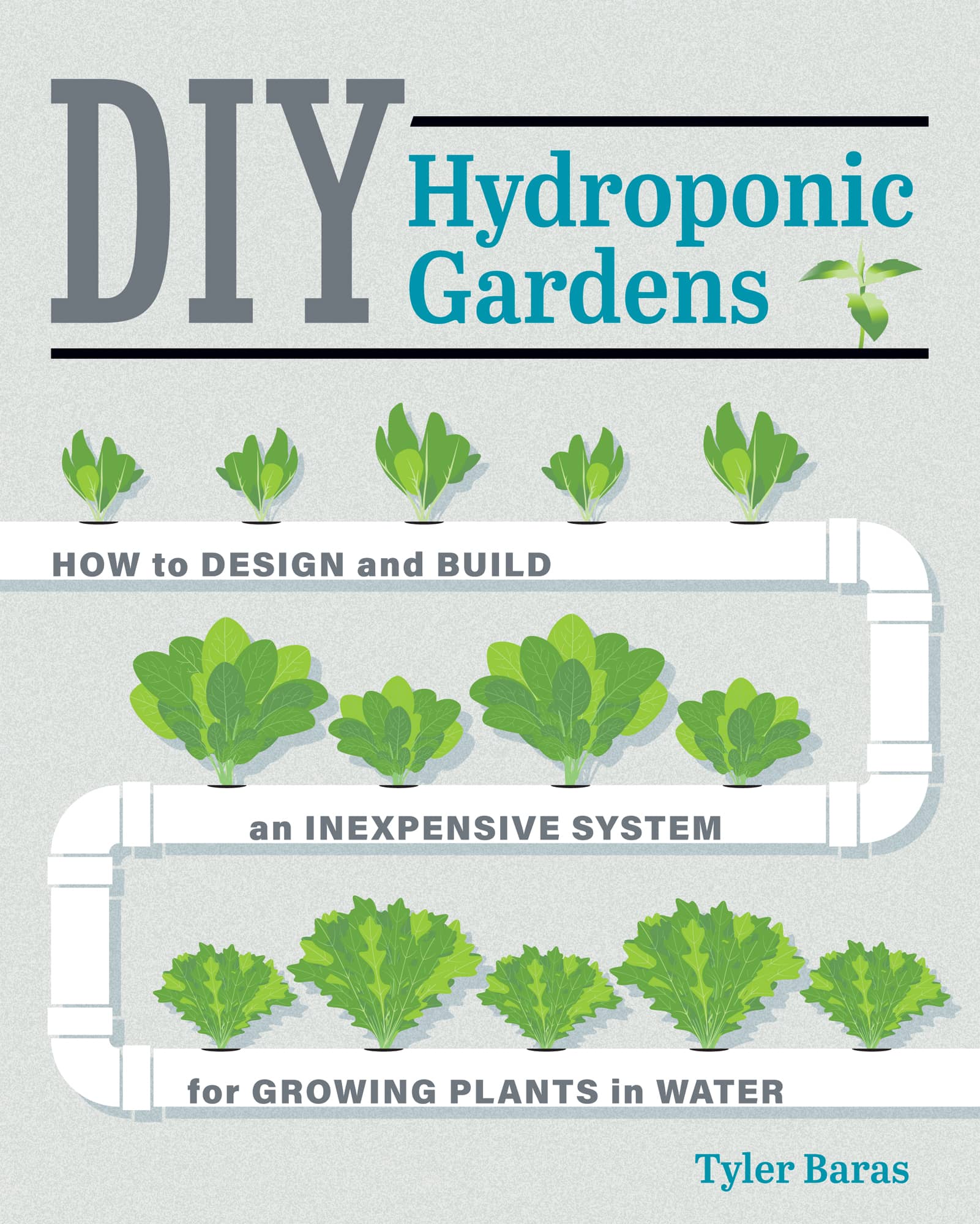Tyler Baras - DIY Hydroponic Gardens: How to Design and Build an Inexpensive System for Growing Plants in Water
Here you can read online Tyler Baras - DIY Hydroponic Gardens: How to Design and Build an Inexpensive System for Growing Plants in Water full text of the book (entire story) in english for free. Download pdf and epub, get meaning, cover and reviews about this ebook. year: 2018, publisher: Cool Springs Press, genre: Children. Description of the work, (preface) as well as reviews are available. Best literature library LitArk.com created for fans of good reading and offers a wide selection of genres:
Romance novel
Science fiction
Adventure
Detective
Science
History
Home and family
Prose
Art
Politics
Computer
Non-fiction
Religion
Business
Children
Humor
Choose a favorite category and find really read worthwhile books. Enjoy immersion in the world of imagination, feel the emotions of the characters or learn something new for yourself, make an fascinating discovery.

- Book:DIY Hydroponic Gardens: How to Design and Build an Inexpensive System for Growing Plants in Water
- Author:
- Publisher:Cool Springs Press
- Genre:
- Year:2018
- Rating:5 / 5
- Favourites:Add to favourites
- Your mark:
DIY Hydroponic Gardens: How to Design and Build an Inexpensive System for Growing Plants in Water: summary, description and annotation
We offer to read an annotation, description, summary or preface (depends on what the author of the book "DIY Hydroponic Gardens: How to Design and Build an Inexpensive System for Growing Plants in Water" wrote himself). If you haven't found the necessary information about the book — write in the comments, we will try to find it.
With practical information aimed at home DIYers, author Tyler Baras (Farmer Tyler to his fans) shows exactly how to build, plant, and maintain more than a dozen unique hydroponic systems, some of which cost just a few dollars to make. Growing produce without soil offers a unique opportunity to have a productive garden indoors or in areas where soil is not present.
An expert in hydroponics, Baras has developed many unique and easy-to-build systems for growing entirely in water. In DIY Hydroponic Gardens, he shows with step-by-step photos precisely how to create these systems and how to plant and maintain them. All the information you need to get started with your home hydroponic system is included, from recipes for nutrient solutions, to light and ventilation sources, to specific plant-by-plant details that explain how to grow the most popular vegetables in a self-contained, soilless system.
Even if you live in an area were water is scarce, a hydroponic system is the answer youve been looking for. Hydroponic systems are sealed and do not allow evaporation, making water loss virtually nonexistent.
Tyler Baras: author's other books
Who wrote DIY Hydroponic Gardens: How to Design and Build an Inexpensive System for Growing Plants in Water? Find out the surname, the name of the author of the book and a list of all author's works by series.

